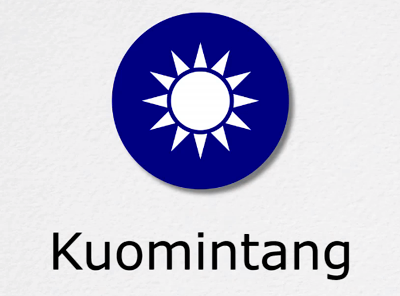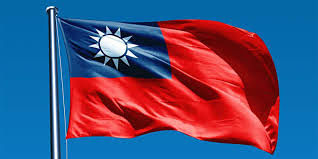
The tension between the free world and China’s (the People’s Republic of China, aka PRC) view of Taiwan (the Republic of China, aka ROC) is not a new political flashpoint and it deserves a review given recent threats by Beijing amidst a contested presidential election in the U.S.
At the end of the 19th century, the Qing Dynasty governed China and encompassed all of modern-day China, Taiwan, and Mongolia, along with several parts of other bordering nations. In 1894-1895, the first Sino-Japanese war began between the Qing Dynasty and the Japanese Empire, which primarily took place in Korea and Taiwan. After a decisive Japanese victory, the Treaty of Shimonoseki was signed on April 17, 1895, annexing Taiwan to Japan, which ruled the island until its defeat in World War II. Korea was subsequently ruled by the Joseon Dynasty (client state of the Qing Dynasty) with complete independence from China. In 1910, Japan annexed the Korean peninsula. In 1912, after a millennium of imperial rule in China, the monarchy was overthrown and the first Chinese Republic was established as the ROC. Sun Yat-sen was made the provisional president in Nanjing, but Yuan Shikai had already assumed power in Beijing after his rise of authority during the Qing Dynasty and he was in command of the largest and first modernized New Army. To avoid conflict, Sun Yat-sen agreed to accept Yuan Shikai as president but eventually abused his power, which led to a failed revolution and Sun Yat-sen fled to Japan.
 As president, Yuan dissolved the Chinese Nationalist Party and in 1915 declared himself the Hongxian Emperor to try and restore the monarchy. Following his death one year later, China became fragmented into northern and southern factions and that period became known as the Warlord Era until 1928. In 1917, Sun Yat-sen returned from exile to reestablish the republic and revived his nationalist party under the name of Kuomintang in the south, while the north remained dominated by warlords and the imperial army. Sun Yat-sen lacked the military power to take on the warlords and refused help from the Western World but accepted assistance from the Soviet Union. In exchange, the Soviets asked the Kuomintang to cooperate with an ally and much smaller Communist Party of China. After the death of Sun Yat-sen in 1925, the alliance between the nationalists and communists fell apart and the Kuomintang party divided. The left-leaning party made its capital in Wuhan and the originally right-leaning nationalists, now led by Chiang Kai-shek, took control of Nanjing as its capital. The Chiang nationalists purged communists from their ranks in what is known as the Shanghai Massacre in April of 1917. The left-leaning party also executed communists and eventually collapsed, which left the original nationalists as the sole and legitimate ruling party of China. The execution of communists ended the alliance with the Soviet Union and laid the foundation for civil war between Chiang Kai-shek’s nationalists and Mao Zedong’s Chinese Workers’ and Peasants’ Red Army in August of 1927.
As president, Yuan dissolved the Chinese Nationalist Party and in 1915 declared himself the Hongxian Emperor to try and restore the monarchy. Following his death one year later, China became fragmented into northern and southern factions and that period became known as the Warlord Era until 1928. In 1917, Sun Yat-sen returned from exile to reestablish the republic and revived his nationalist party under the name of Kuomintang in the south, while the north remained dominated by warlords and the imperial army. Sun Yat-sen lacked the military power to take on the warlords and refused help from the Western World but accepted assistance from the Soviet Union. In exchange, the Soviets asked the Kuomintang to cooperate with an ally and much smaller Communist Party of China. After the death of Sun Yat-sen in 1925, the alliance between the nationalists and communists fell apart and the Kuomintang party divided. The left-leaning party made its capital in Wuhan and the originally right-leaning nationalists, now led by Chiang Kai-shek, took control of Nanjing as its capital. The Chiang nationalists purged communists from their ranks in what is known as the Shanghai Massacre in April of 1917. The left-leaning party also executed communists and eventually collapsed, which left the original nationalists as the sole and legitimate ruling party of China. The execution of communists ended the alliance with the Soviet Union and laid the foundation for civil war between Chiang Kai-shek’s nationalists and Mao Zedong’s Chinese Workers’ and Peasants’ Red Army in August of 1927.
In 1931, with the civil war ongoing, the empire of Japan used the war to expand their sphere of influence and invaded China via the east coast and occupied Manchuria and nearby lands. Japan installed a public government and the war escalated in 1936-1937 when an alliance was formed between the nationalists and communists to defeat the Japanese invaders, marking the beginning of the second Sino-Japanese War. Japan pushed into the capital of Nanjing and massacred tens of thousands of civilians and military personnel.
In 1941, Japan carried out the infamous attack on Pearl Harbor that heralded the U.S.’ entry into World War II to limit the ability for anyone to interfere with their operations in the Pacific. As we all know, that strategic move by Japan ended with their surrender in 1945 and returned sovereignty to all lands gained during World War II, as well as their annexations of Korea and Taiwan several decades earlier. The island of Taiwan was first taken from the Qing Dynasty in 1895 and was to be returned to China.
In 1946, the Chinese civil war started again, with the Soviet Union backing the communists and the U.S. backing the nationalists that were in the early years of the Cold War. The civil war was decisively won by the communists and eventually pushed the nationalists off of the mainland and over to Taiwan in 1949. That effectively ended the civil war but no official peace treaty was ever signed. Later that year, the communists proclaimed the PRC, and the Kuomintang government proclaimed Taiwan as the ROC.


Over the following decades, international recognition began shifting from the ROC to the PRC. In 1971, the United Nations Resolution 2758 recognized the PRC as the legitimate government of China. Even though the U.S. voted against the resolution, it eventually broke off diplomatic ties with the ROC in 1979. That same year, the PRC attempted to open communications with the ROC with a proposal known as the “Three Links” of postal, transportation, and trade. The ROC rejected the proposal and adopted their own “Three Noes” policy of no contact, no compromise, and no negotiation. In 1986, the Three Noes policy was revised after a China Airlines 747 was hijacked in Bangkok by an ROC pilot that changed his course to the Guangzhou Province, where he defected to the PRC, forcing the PRC and ROC to communicate. In 1992, the two governments came to an agreement known as the 1992 Consensus, in that both sides adhere to the “One China Policy,” but both sides still see themselves as the legitimate government of China.
What is the ‘One China’ Policy?… “It is the diplomatic acknowledgement of China’s position that there is only one Chinese government. Under the policy, the US recognizes and has formal ties with China rather than the island of Taiwan, which China sees as a breakaway province to be reunified with the mainland one day. The One China policy is a key cornerstone of Sino-US relations. It is also a fundamental bedrock of Chinese policy-making and diplomacy. However, it is distinct from the One China principle, whereby China insists Taiwan is an inalienable part of one China to be reunified one day. The US policy is not an endorsement of Beijing’s position and indeed as part of the policy, Washington maintains a ‘robust unofficial’ relationship with Taiwan, including continued arms sales to the island so that it can defend itself. Although Taiwan’s government claims it is an independent country officially called the ‘Republic of China’, any country that wants diplomatic relations with mainland China must break official ties with Taipei. This has resulted in Taiwan’s diplomatic isolation from the international community.” – BBC, Feb. 2017
Is the ‘1992 Consensus’ Fading Away in the Taiwan Strait?… China’s mixed messages on the consensus and Taiwan’s elimination of it entirely are likely rooted in Chinese President Xi Jinping’s January 2019 speech commemorating the 40th anniversary of a ‘Message to Compatriots in Taiwan.’” – RAND, Jun. 3, 2020
Fast forward to today, with numerous air and sea provocations, coarse words between the U.S. and China due to the COVID-19 pandemic, fading progress in ending a trade war despite the first-phase agreement, unknowns surrounding the contested U.S. presidential election, and tensions over Taiwan are ramping up.
US Warns China Against Taiwan Attack, Stresses US ‘Ambiguity… “The U.S. national security adviser warned China on Wednesday against any attempt to take Taiwan by force, saying amphibious landings were notoriously difficult and there was a lot of ambiguity about how the United States would respond… O’Brien’s comments come at a time when China has significantly stepped up military activity near Taiwan and when U.S.-China relations have plunged to the lowest point in decades in the run-up to President Donald Trump’s Nov. 3 reelection bid. O’Brien repeated U.S. calls for Taiwan to spend more on its own defense and to carry out military reforms to make clear to China the risks of attempting to invade… Taiwan needed to ‘turn themselves into a porcupine’ militarily, he said, adding, ‘Lions generally don’t like to eat porcupines.’ On Tuesday, the senior U.S. defense official for East Asia called Taiwan’s plan to boost defense spending by $1.4 billion next year insufficient.” – Epoch Times, Oct. 8
China warns of action after Pompeo says Taiwan not part of China… “China will strike back against any moves that undermine its core interests, its foreign ministry said on Friday after US Secretary of State Mike Pompeo said that Taiwan ‘has not been a part of China’… China calls Taiwan the most sensitive and important issue in its ties with the United States and has been angered by the Trump administration’s stepped up support for the Chinese-claimed yet democratically ruled island, such as arms sales… The United States is bound by law to provide Taiwan with the means to defend itself and officially only acknowledges the Chinese position that Taiwan is part of it, rather than explicitly recognizing China’s claims. Speaking in Beijing, Chinese foreign ministry spokesman Wang Wenbin said Taiwan was an inalienable part of China and that Pompeo was further damaging Sino-US ties. ‘We solemnly tell Pompeo and his ilk, that any behavior that undermines China’s core interests and interferes with China’s domestic affairs will be met with a resolute counterattack by China,’ he said, without elaborating.” – NYP, Nov. 13
I have no idea how the current rift in relations will play out, but one variable, in particular, stands out like a sore thumb and is often overlooked, which is China’s strategic interests surrounding the importation of raw materials and oil.
- Strait of Malacca Key Chokepoint for Oil Trade – Maritime Executive, Aug. 2018
- The Malacca Dilemma: Hindrance to Chinese Ambitions – Berkley, Aug. 2019
Roughly 90% of crude oil supply flowing through the South China Sea must go through the Strait of Malacca from the Persian Gulf, Africa, and other markets in Asia, as alternate routes can add 1,000 miles in transit time. That is a major chokepoint for China and any escalation with a blockade would certainly be a significant warning shot to get your investment portfolio in order.
Tim Timebomb – 30 Pieces of Silver
Plan Your Trade, Trade Your Plan
TraderStef on Twitter
Website: https://traderstef.com


